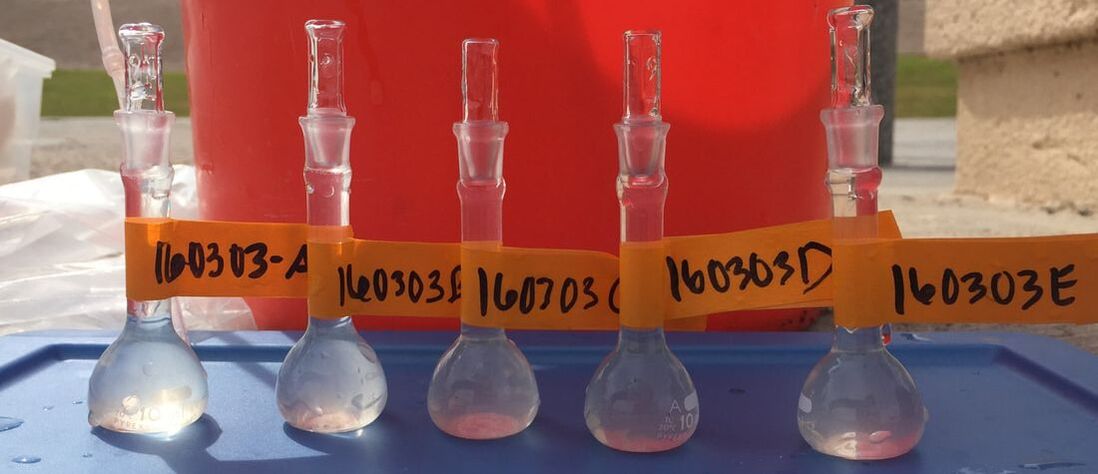Biosignature preservation and retention in hot spring deposits
Hot spring deposits are astrobiological targets for investigating life on early Earth and potentially Mars. The fast precipitation of silica on microbial communities leaves behind a fossil record of chemical and morphological biosignatures. My research investigates the preservation of organic matter, microfossils, biofabrics, and biosedimentary structures in three distinct hot springs systems and how post-depositional diagenesis affects the retention of these biosignatures. This type of analog research provides a framework for interpreting older deposits by documenting the types of biosignatures that become preserved. We can overcome some of the challenges that prevent us from recognizing biosignatures in ancient rocks with this context.
|
Case study 1: Biosignature preservation in siliceous hot springs starts with mineralization by opal-A. Opal-A is metastable and undergoes progressive mineral diagenesis to the more stable silica phases of Opal-C, opal-CT, and quartz. In this case study, I investigated how silica mineral diagenesis affects the morphology of microfossils. I collected samples from the Puchuldiza Geothermal field in northern Chile for this study.
Case study 2: The rapid precipitation of silica facilitates the preservation of microfossils and biofabrics in hot springs. However, post-depositional fumarolic overprinting can modify and erase these biosignatures. This case study showed that microbial fossils are removed from the deposits, and biosedimentary structures are modified when subjected to fumarolic overprinting. Samples for this study were collected from Gunnuhver, Iceland. Case study 3: On Earth, hot spring deposits are usually either siliceous (sinters) or carbonaceous (travertine). Previous work on silica-carbonate hybrid hot spring deposits has shown that microfossil preservation was primarily found in the siliceous components with very little evidence of preservation in the calcite. This case study investigated the deposits at Lýsuhóll, a silica-carbonate hot spring in Iceland. The deposits from Lysuholl are the first to show a wide range of preservation styles with silica and silica+calcite mineralogy. The different types of microfossil preservation in these minerals indicate that the taphonomic history (how organisms decay and become fossils) can impact what is preserved and our ability to interpret the fossil record. |
Biotic and abiotic influences to oxygen supersaturation in Tempe Town Lake, AZ
|
Dissolved oxygen concentrations for the past decade show that Tempe Town Lake is supersaturated with O2 for approximately 70% of the year, with 30% of the data equal to or greater than 120% saturation. This data may suggest that the biological production of O2 exceeds its consumption. However, abiotic processes such as bubble injection or thermal warming can also shift the oxygen concentration from equilibrium.
We collected surface water samples bi-weekly over a year and measured argon:oxygen ratios to determine biotic and abiotic contributions to oxygen supersaturation. Argon was used as a tracer for abiotic contributions of oxygen because it has similar solubility as oxygen and is biologically inert. The samples were analyzed using Membrane Inlet Mass Spectrometry (Hartnett et al., 1998). Our time series shows that argon saturations closely track oxygen, suggesting that abiotic processes are the main drivers of the observed oxygen supersaturation at Tempe Town Lake. |
Recreating microbial ecosystems of the late Archean
|
Microbialites are important deposits for studying early Earth ecosystems. The morphology in the millimeter- to meter-scale structure of some microbialites can be used to understand the microbial communities that created them, even when all microbial cells have degraded. Archean fenestrate microbialites from the Gamohaan Formation, South Africa, display complex morphologies that are distinctly microbial. Two of the most complex textures consist of cuspate and plumose microbialites. Whereas plumose microbialites are not generally represented in the rock record, cuspate microbialites have been reported from several sites.
Using the growth orientation and relationships between the microbialite components of cuspate and plumose microbialites we show that their growth can be reconstructed in terms of three microbial communities with distinct growth forms. |







